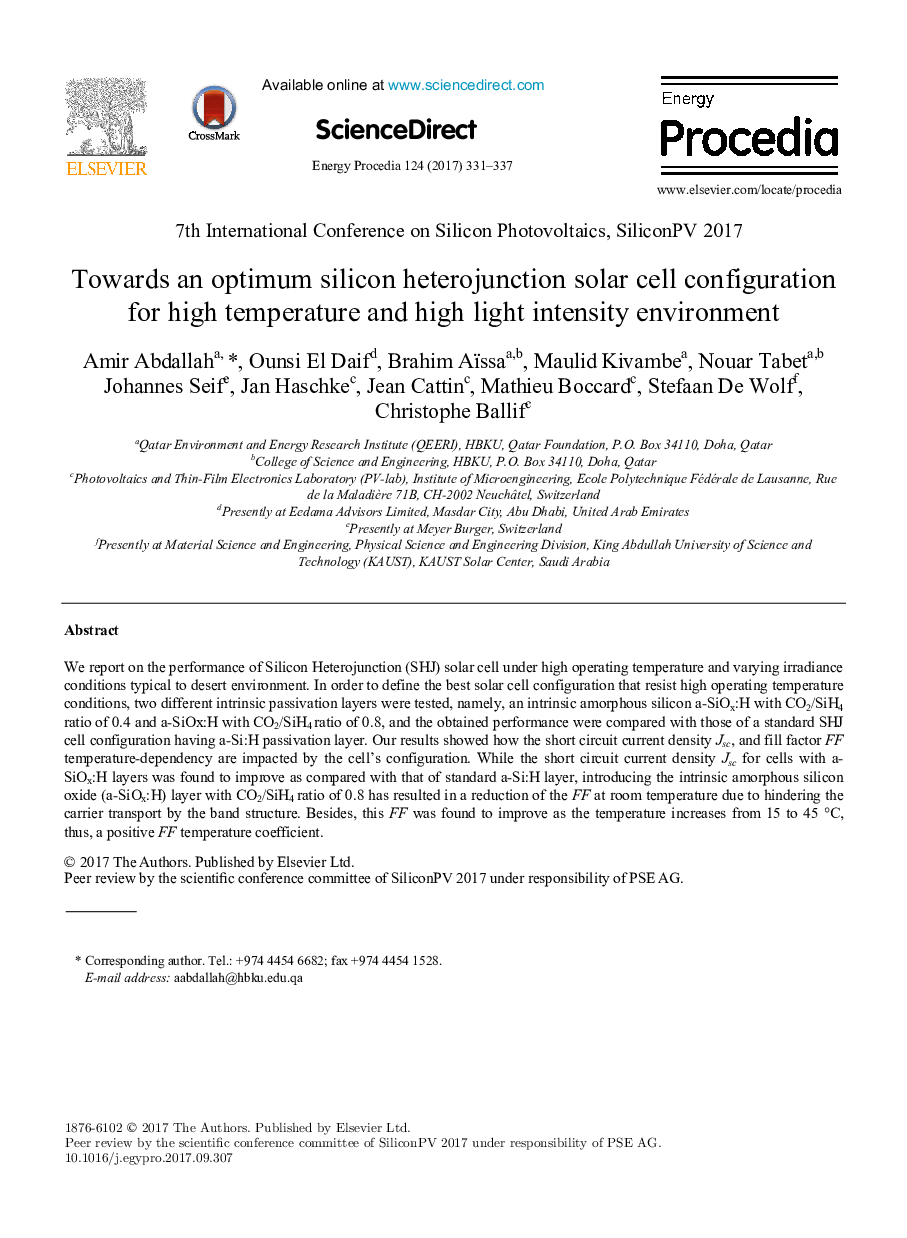| Article ID | Journal | Published Year | Pages | File Type |
|---|---|---|---|---|
| 5444576 | Energy Procedia | 2017 | 7 Pages |
Abstract
We report on the performance of Silicon Heterojunction (SHJ) solar cell under high operating temperature and varying irradiance conditions typical to desert environment. In order to define the best solar cell configuration that resist high operating temperature conditions, two different intrinsic passivation layers were tested, namely, an intrinsic amorphous silicon a-SiOx:H with CO2/SiH4 ratio of 0.4 and a-SiOx:H with CO2/SiH4 ratio of 0.8, and the obtained performance were compared with those of a standard SHJ cell configuration having a-Si:H passivation layer. Our results showed how the short circuit current density Jsc, and fill factor FF temperature-dependency are impacted by the cell's configuration. While the short circuit current density Jsc for cells with a-SiOx:H layers was found to improve as compared with that of standard a-Si:H layer, introducing the intrinsic amorphous silicon oxide (a-SiOx:H) layer with CO2/SiH4 ratio of 0.8 has resulted in a reduction of the FF at room temperature due to hindering the carrier transport by the band structure. Besides, this FF was found to improve as the temperature increases from 15 to 45 °C, thus, a positive FF temperature coefficient.
Keywords
Related Topics
Physical Sciences and Engineering
Energy
Energy (General)
Authors
Amir Abdallah, Ounsi El Daif, Brahim Aïssa, Maulid Kivambe, Nouar Tabet, Johannes Seif, Jan Haschke, Jean Cattin, Mathieu Boccard, Stefaan De Wolf, Christophe Ballif,
